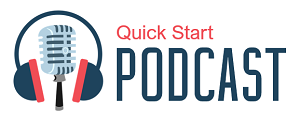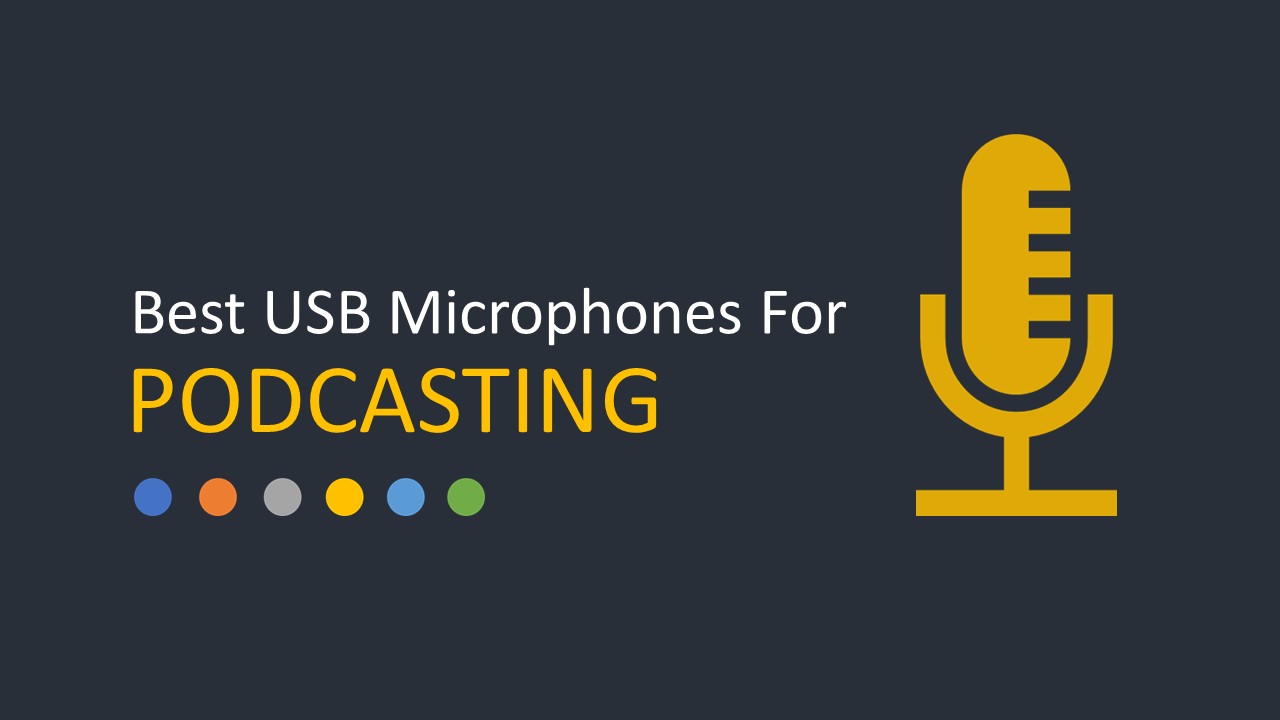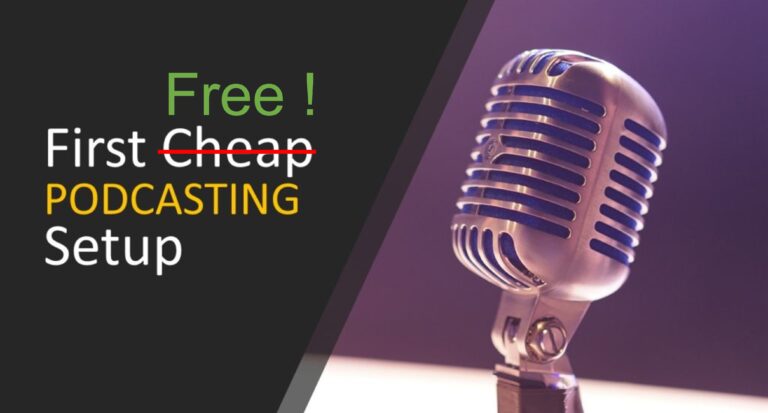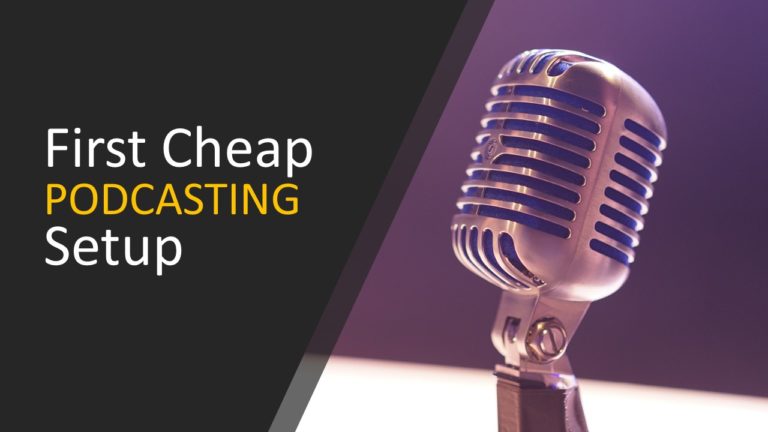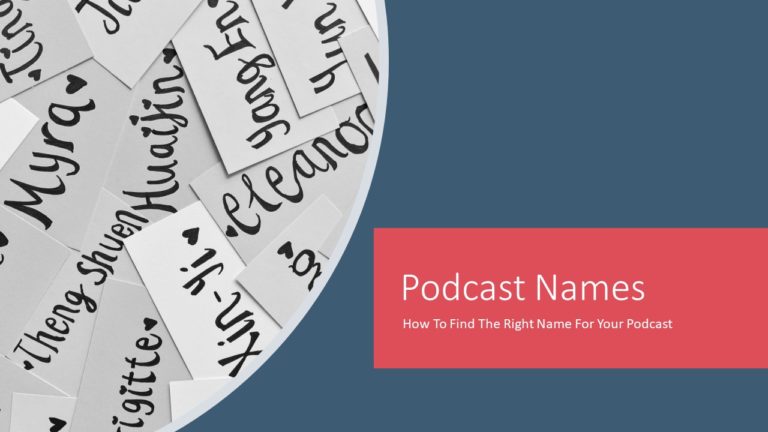Best USB Microphones For Podcasting & Voice Recording
Selecting the right microphone is one of the most important things in podcasting. A poor-quality microphone can really set your show back in terms of quality experienced by the listeners and it is essential to buy the right microphone for podcasting.
Following are the 6 best USB microphones for Podcasting
- Blue Yeti USB version
- Rode NT USB
- Audio-Technica AT2020
- Rode Podcaster
- Samson G-Track Pro
- Audio-Technica ATR 2100-USB
You can read about different types of microphones in below posts in detail. USB Vs XLR Microphone , Dynamic Vs Condenser Microphone.
You can also read about external microphones for iPhone here. You will also need a POP filter for microphone . Check it out here.
Let’s take a look at the best USB Microphones for podcasting.
What is a USB microphone?
There are two different ways of connecting your microphone to your recording device using either USB or XLR.
The Full form of USB is Universal Serial Bus. Universal Serial Bus (USB) is an industry standard used to define the connectors, cables and communication protocols between computers and with other electronic devices.
Most computers have one or more USB ports. There are different versions of USB ports such as USB 2.0, 3.0 and 3.1. Later versions offering higher data transfer speeds. All these are USB Type A connections.
USB Type C is also a new interface but currently most of the microphones in the market feature a USB Type A connection only and any of the version is sufficient for data transfer requirements of a podcasting microphone. If your computer has a USB C port , then you will need to buy an USB C to A converter.
Advantages of USB Microphones
Mics with the USB connector can be connected directly to your computer which makes it extremely easy to just connect the mic to your computer and select it as the microphone or input source in the settings in many cases.
This will happen automatically in most cases. You can then open the recording software of your choice such as Audacity on Windows or Garage Band on MAC. Confirm the correct mic is selected and start recording.
It’s that simple for a USB mic to be used for recording.
Disadvantage of USB Microphones
While USB microphones are extremely easy to set up for one person to record. It gets much harder however, if you want to have more than one microphone for a guest or co-host in your podcast.
Connecting multiple USB mics into one computer can be tricky and may not be possible with most computers or recording software.
Quality of audio is generally good, and you will not have any complaints. One must remember though that USB is not the most preferred type of connection for professionals as they have to deal with multiple mics and mixers, where XLR is a far better and an Industry standard option.
Below are some of the most popular USB microphones for podcasting.
Blue Yeti Microphone for Podcasting : Most popular USB microphone for podcasting
Yeti is a multi-pattern USB microphone . It can be used as a plug and play USB microphone. It connects directly to the USB port on your laptop or desktop computer and without having to download any other software will work with your favourite recording program.
Blue Yeti is one of the most popular microphones among podcasters and has a great vocal recording performance.
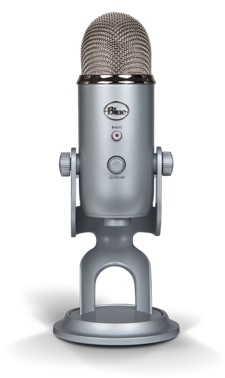
Price Range
100 to 150 USD
Blue Yeti Features
Whether you’re recording to GarageBand or audacity, podcasting, dictation or even Skype. Yeti features three condenser capsules. A condenser capsule delivers that rich detailed audio you typically find in studio recording.
Yeti features some studio controls directly on the mic on the back above your or pattern selection You have analog gain control which allows you to adjust the sensitivity of the microphone. You can also plug headphones directly into Yeti for zero latency direct monitoring, which is great for multi-tracking or just being able to hear exactly what you’re recording without any echo or delay.
Yeti features headphone volume control on the front as well as a mute button in case you have to pause in the middle of a podcast. Yeti comes with a desktop stand, but also has a standard thread for attaching to a traditional mic stand or the Radius, which is yetis custom shock mount sold separately.
Blue Yeti is a really well built and heavy microphone with really good asthetics.
Recording Polar Patterns
As a multi-pattern microphone Yeti offers four Polar pattern options or directions in which the mic will pick up sound.
- Yeti will record in cardioid, which is directionally to the front, great for instruments or single person podcast.
- Yeti will also record an omnidirectional which is 360 Degrees around the mic. This is great for band practice of Chorus or multi-person podcast.
- Yeti will also record in Stereo which is right and left. This is great for instrument recording to get your right and left separation or for voice and vocals. It gives you an open natural room sound.
- Yeti will record in figure of eight or bi-directional which just means front and back. This is great for Duets or interviews.
Blue Yeti Technical Specifications
- Power Required/Consumption: 5V 150mA
- Sample Rate: 48 kHz
- Bit Rate: 16-bit
- Capsules: 3 Blue-proprietary 14mm condenser capsules
- Polar Patterns: Cardioid, Bidirectional, Omnidirectional, Stereo
- Frequency Response: 20Hz – 20kHz
- Max SPL: 120dB (THD: 0.5% 1kHz)
- Dimensions (extended in stand): 4.72″ (12cm) x 4.92″(12.5cm) x 11.61″(29.5cm)
- Weight (microphone): 1.2 lbs (.55 kg)
- Weight (stand): 2.2 lbs (1 kg)
Blue Yeti Headphone and Amplifier Specs
- Impedance: 16 ohms
- Power Output (RMS): 130 mW
- THD: 0.009%
- Frequency Response: 15 Hz – 22 kHz
- Signal to Noise: 100dB
Rode NT USB Microphone for Podcasting : Best mid-range USB microphone for podcasting
The Rode brand name needs no introduction. It is known across the world for making high performance and high-quality microphones. It is especially popular among DSLR users with their shotgun microphones. Rode NT USB Microphone is also a Steller performer.
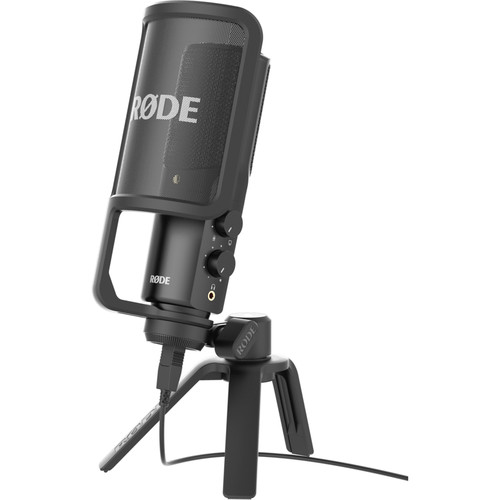
Price Range
140 to 170 USD
Rode NT USB Microphone Features
The microphone has a really well-built capsule, firm controls for operation as well as a standard thread accompanied by a suitable tripod stand. The tripod is really nice, however, as mentioned earlier, if you’d like, you can opt for a suspension kit also. Another really great feature is the attached pop-shield which really helps to cut the plosives.
The Rode NT-USB condenser microphone is a plug and play microphone and does not require any software or drivers to work. This is great for if you’re not necessarily intending to plug it into an audio interface.
The right-hand side features two controls which act as an audio interface. These are meant to be used for controlling the microphone’s volume and gain, respectively. On the underside of the microphone, you will find a standard 3.5mm jack that is intended for headphones.
The Rode NT-USB Condenser Microphone has a frequency response ranging from 20Hz to 20kHz. It also features an SPL Max of 110dB , it means that the microphone has a pretty large dynamic range built into it.
Microphone offers great quality for mid-range and vocals in terms of recording quality and produces rich sound quality. It is one of best mid-range condenser microphones . Also attached is a 16 bit A/D converter.
The microphone also offers a great onboard monitoring system, which functions with the use of headphones. Users can connect their headphones into the jack at the bottom for monitoring. The monitoring system offers zero latency, great for studio operation as it produces fairly loud and clean sound.
Rode NT USB Microphone Technical Specifications
- Sound Field Mono
- Operating Principle: Pressure Gradient
- Diaphragm 0.5″ / 12.70 mm
- Polar Pattern : Cardioid
- Frequency Range: 20 Hz to 20 kHz
- Maximum SPL: 110 dB SPL
- Output Connectors: 1 x USB (Type Unspecified)
- Headphone Connector: 1 x 1/8″ / 3.5 mm
- A/D Conversion: 16-Bit
- Sample Rate: 48 kHz
- Available Port: USB (Interface Unspecified)
- Dimensions ø: 1.97 x L: 7.24″ / ø: 50 x L: 184 mm
- Weight:1.14 lb / 520 g
Audio-Technica AT2020 for Podcasting : Nest budget USB microphone for podcasting
The AT2020 USB is a side-address fixed-charge condenser microphone with USB digital output (Windows and Mac compatible) and a cardioid polar pattern. Designed to plug directly into a computer’s USB port, the microphone is ideal for digitally capturing music or any audio source using your favourite recording software.
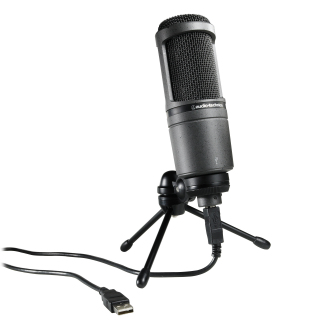
Price Range
90 to 110 USD
The microphone offers studio-quality articulation and intelligibility perfect for home studio recording, field recording, podcasting and voiceover use.
The microphone requires USB Power (5V DC) for operation; this is supplied through the computer’s USB port via the included USB cable.
The cardioid polar pattern of the microphone is more sensitive to sound originating directly in front of the element.
The microphone is enclosed in a rugged housing. The included pivoting stand mount permits mounting on any microphone stand with 5/8″-27 threads. A tripod desk stand and a soft protective pouch are also included.
Audio-Technica AT2020 Features
- Side-address studio condenser with USB digital output (Windows
- and Mac compatible)
- Ideal for podcasting, home studio recording, field recording and
- voiceover use
- Custom-engineered low-mass diaphragm provides extended
- frequency response and superior transient response
- Low self-noise—perfectly suited for sophisticated digital
- recording equipment
- Cardioid polar pattern reduces pickup of sounds from the sides
- and rear, improving isolation of desired sound source
- Rugged design and construction for reliable performance
- Pivoting, threaded stand mount attaches securely for easy and
- precise placement of the microphone
- Tripod desk stand with folding legs for secure and easily portable
- tabletop use
Audio-Technica AT2020 Technical Specs
- Element: Fixed-charge back plate, permanently polarized condenser
- Polar Patter : Cardioid
- Frequency response: 20-16,000 Hz
- Power requirements: USB Power (5V DC)
- Weight: 13.2 oz (374 g)
- Dimensions: 6.38″ (162.0 mm) long,
- 2.05″ (52.0 mm) maximum body diameter
- Output connector: USB-type
- Accessories furnished: Pivoting stand mount for 5/8″-27 threaded stands; 5/8″-27 to 3/8″-16 threaded adapter; soft protective pouch; tripod desk stand; 10′ (3.1 m) USB cable
Rode Podcaster USB Microphone for Podcasting : Pro USB microphone for podcasting
The Rode Podcaster is a dynamic, USB microphone that combines broadcast-quality audio with the simplicity of USB connectivity. It can record direct to a computer without the need for an additional digital interface.
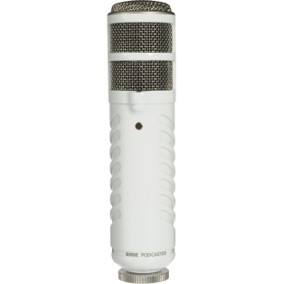
Price Range
200 to 250 USD
Rode Podcaster Features
It includes 18-bit resolution, 48kHz sampling A/D converter, the Podcaster processes all of the analogue-to-digital conversion internally, thus bypassing the computer’s lower quality on-board sound controller and giving a much better sound quality.
A headphone output on the microphone body provides zero-latency monitoring, so the user can hear exactly what is being recorded, free of delay or echo.
The Podcaster features an internal pop filter, designed to minimise plosives sounds , this means that you do not need an additional POP filter.
It is fully compatible with Windows and MAC. The Podcaster is ideal for podcasting, videos, YouTube, voiceover, any production application that requires a simple yet professional microphone.
It can also be used as an iPad microphone for the Apple iPad (in conjunction with the iPad Camera Connection Kit and a powered USB hub) to provide high quality recording to various iPad audio applications such as Garageband.
The Podcaster includes a sturdy RM2 microphone ring mount.
Rode Podcaster Technical Specs
- Acoustic Principle: Dynamic
- Active Electronics: Analogue signal conditioning + A/D and USB interface
- Polar Pattern: Cardioid
- Resolution: 24-bit
- Sampling Rate: 44-96kHz
- Address Type: End
- Frequency Range: 40Hz – 14kHz
- Maximum SPL: 115dBSPL
- Sensitivity: -51.0dB re 1 Volt/Pascal (2.80mV @ 94 dB SPL) +/- 2 dB @ 1kHz
- Power Options: USB bus powered
- Weight: 655.00g
- Dimensions: 215.00mmH x 56.00mmW x 52.00mmD
- Output: USB
Samson G-Track Pro Microphone for Podcasting
Achieving professional recording quality at home or in the studio has truly never been easier than with the Samson G-Track Pro Studio mic! G-Track Pro is a USB microphone with an instrument input and mixer for recording two independent audio channels at one time.
With the ability to capture your audio at 24-bit/96kHz, your recordings will deliver extremely detailed, high-resolution results. With plug-and-play connectivity and a straightforward design, G-Track Pro is the right choice for musicians, podcasters or streamers.
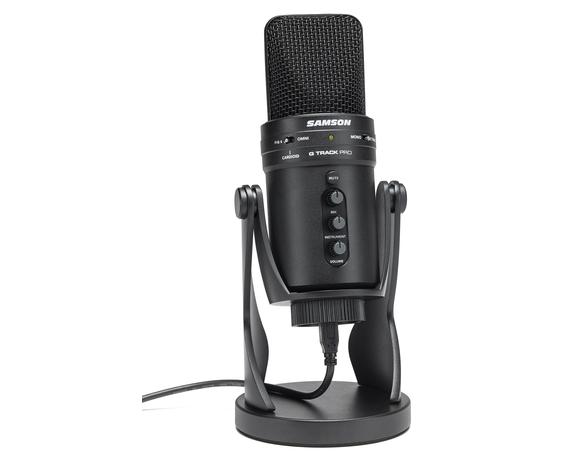
Price Range
90 to 110 USD
Samson G-Track Pro Studio USB Condenser Mic Features
- All-in-one professional USB microphone with audio interface
- Ideal for podcasting, gaming/streaming and recording music
- Dual 1-inch (25mm) condenser capsules
- Cardioid (unidirectional), bidirectional and omnidirectional pickup patterns
- Smooth, flat frequency response of 50Hz–20kHz
- 24-bit, 96kHz resolution
- USB output for connecting to any Mac or PC device
- 1/4-inch instrument input for connecting guitars or line level devices
- Record Mic and Instrument input simultaneously
- 1/8-inch stereo headphone output with level control for zero-latency monitoring
- 3-color Power/Clip/Mute LED
- Plug-and-play, no driver installation required
- Compatible with most computer-based digital audio workstation software
- Die-cast zinc construction with heavy gauge mesh grille
Dual 1 inch (25mm) large-diaphragm condenser capsules captures the detail and nuance of your voice or instrument. Offering three selectable pickup patterns (cardioid, omnidirectional and bidirectional), G-Track Pro provides the flexibility for any project.
The front panel features a Mic gain control, so you always get the best signal level no matter where the mic is placed.
Samson G-Track Pro as an audio interface
G-Track Pro includes a standard 1/4-inch instrument input for recording bass, guitar, keyboard and other line level devices. Singer/songwriters can quickly capture vocal and instrument performances simultaneously or podcasters can add a sub-mixer to record additional hosts and guests. A Mono / 2-Track switch allows you to record the mic and instrument on the same tracks for streaming content or on separate tracks for post-production editing.
Samson G-Track Pro as a Mixer
G-Track pro includes a full-featured mixer with independent controls for the Mic and Instrument volume controls to optimize your mix. The 1/8-inch stereo output and high-quality headphone amplifier provides zero-latency playback complete with direct monitoring mix controls. It also features a Mute button that silences the input signals when needed, which is ideal for podcasters and gamers.
Samson G-Track Pro Specifications
- Polar Pattern: Cardioid (unidirectional), bidirectional, omnidirectional
- Capsule: Dual back electret condenser
- Diaphragm Width/Thickness: 25mm/3 microns
- Frequency Response: 50Hz–20kHz
- Sensitivity: +6dB FS/PA (all polar patterns)
- Max. SPL: 120dB SPL
- Bit Depth: 16 or 24-bit
- Sample Rate: Up to 96kHz
- Digital Output: USB
- Headphone Output: 1/8″ (3.5mm)
- Headphone Impedance: 16Ω
- Headphone Power Output: 85mW @ 32Ω
- Instrument Input: 1/4″
- Instrument Input Impedance: 1MΩ
- Controls: Mute, Mic/Instrument/Headphone Volume, Monitor On/Off, Mono/2 Track
- Product Dimensions: 4.5″ (116mm) x 10.5″ (268.5mm) diameter
- Product Weight: 3.52lb (1.6kg)
Audio-Technica ATR 2100-USB: Best Microphone for Podcasting under 100 USD
The ATR2100-USB is designed to take you from the stage to the studio and beyond. This rugged handheld microphone offers two outputs, USB output for digital recording, and an XLR output that connects with a sound system’s conventional microphone input for use in live performance.
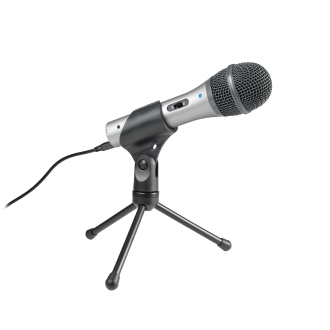
Price Range
50 to 80 USD
The microphone plugs right into your computer’s USB port, and functions seamlessly with your favourite recording software. The ATR2100-USB also offers a quality analog-to-digital converter for excellent fidelity, and a headphone output with level control for monitoring. Its cardioid polar pattern reduces pickup of unwanted sounds from the sides and rear.
The microphone is ideal for live performance, podcasting, home studio recording, field recording, and voiceover use.
Audio-Technica ATR 2100-USB Microphone Features
- Handheld dynamic microphone with USB digital output and XLR analog output
- USB output connects to your computer for digital recording, while the XLR output connects with your sound system’s conventional microphone input for use in live performance
- Smooth, extended frequency response ideally suited for podcasting, home studio recording, field recording, voiceover, and on-stage use
- Built-in headphone jack allows you to directly monitor from your microphone
- Adjust headphone volume with easy-to-use controls on the bottom of the microphone
- High-quality AD convertor with 16 Bit, 44.1/48 kHz sampling rate
- Compatible with Windows and Mac
- Low-mass diaphragm provides excellent frequency response
- Cardioid polar pattern reduces pickup of unwanted sounds from the sides and rear, improving isolation of desired sound source
- Tripod desk stand with folding legs for secure and easily portable tabletop use
- Threaded stand clamp attaches securely to the supplied tripod or to a conventional microphone stand
- USB and XLR cables included
- Durable metal construction for long-lasting performance
- On/off switch functions for both USB and analog operation
Audio-Technica ATR 2100-USB Microphone Technical Specifications
- Element: Dynamic
- Polar pattern : Cardioid
- Frequency response: 50 – 15,000 hz
- Power requirements: USB power (5v dc)
- Bit depth: 16 bit
- Sample rate: 44.1 khz/48 khz
- Controls: on/off switch
- Headphone volume control
- Weight 268 g (9.5 oz)
- Dimensions: 183.0 mm (7.20″) long, 51.0 mm (2.01″) maximum body diameter
- Output connector: USB-type/XLR-type
- Headphone output power: 10 mw @ 16 ohms
- Headphone jack: 3.5 mm TRS (stereo)
- Accessories furnished: Stand clamp for 5/8″-27 threaded stands; tripod desk stand; 2 m (6.6′) mini USB Cable; 3 m (9.8′) xlrf-type to xlrm-type cable
Summery
To summarize the USB microphone space for podcasting, Blue Yeti is one of the most popular choice and and obvious choice. Samson microphone has some innovative features whereas Rode microphones shine in terms of sound quality.
Audio technica ATR 2100 offers almost the same sound quality at a much lower price point and also provides the flexibility of USB and XLR outputs.
Welcome to your podcasting journey with quickstartpodcast team.
Below paragraphs have links to all our posts in a logical manner starting from being a podcast listener to being a podcast creator.
The podcast Listener phase :
The podcasting journey generally begins with various questions such as what is a podcast , what a podcast is used for ? how to listen to a podcast , what are the best android and iOS apps to listen to podcast .
Depending upon the things that you like you will search for fiction podcasts , educational podcasts etc. Most of the people restrict their journey in podcasting to this level. They just end up being listeners to podcasts. Some of then take the next leap of faith and decide to start their own podcast.
Podcast creator Phase :
How to start your podcast ? is the main question they are faced with . Once that you have decided to start a podcast , what should be the name of the podcast , what should be the podcast format , which podcasting niche should you chose , what should be episode titles , what are popular podcast formats and what should be mine and so on ..
What is the right equipment for creating a podcast , what are the best XLR , USB , Condenser and dynamic microphones available. Can I record my podcast in an iPHONE , What should be the polar pattern , should I use an audio interface or a mixer , do I need a POP filter . There are so many question . How much podcasting will cost me , what are different setups based on my budget.
Once you in the journey of podcasting you will need to decide how should be a great podcast intro , how to record the podcast , how to record podcast online , how to test the mic , what should be length and frequency of my podcast , how to make great sounding podcasts and finally how to make money from podcasting ? ..
Whats is a podcast host and do I need one ?? , Uploading podcasts to google podcast and Apple podcasts are also crucial steps.
The journey starts from being a podcast listener going all the way to being a great podcast creator and quickstartpodcast is there with you in all this journey.
